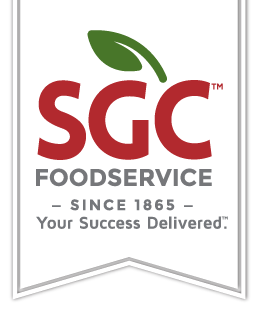In a world where consumers are becoming increasingly conscious about their food choices, the demand for ingredient transparency in restaurants has emerged as a significant trend. It has been talked about on news outlets, social media outlets, print materials, and more. Consumers want to see how their meals are being prepared and what with. This shift is driven by a combination of factors, including heightened awareness about health, dietary preferences, and food allergies. In this blog, we will go into the evolution of consumer expectations, the responses from the restaurant industry, the benefits of ingredient transparency, and the challenges and controversies surrounding this culinary shift.
The Evolution of Consumer Expectations
Changing Consumer Behavior
The landscape of consumer behavior is undergoing a transformation. With the rise of social media, individuals are not only sharing their dining experiences but also engaging in conversations about the quality and origins of the food they consume. It has been common to see consumers posting about different recipes and the ingredients they are using to create the meal or even taking a specific product and going through what is in the ingredients section. This collective awareness is steering consumers toward more conscious food choices.
Health and Dietary Preferences
A parallel trend is the growing interest in health-conscious dining. Consumers are not only seeking delicious meals but are also aligning their food choices with specific dietary preferences, such as veganism, gluten-free, and other lifestyle-oriented approaches. Having these preferences, consumers are expecting restaurants to open up to them and display options on the menu. This has created a demand for restaurants to provide detailed information about the ingredients used in their dishes.
Restaurant Responses to the Trend
Menu Labeling Laws
Recognizing the evolving consumer landscape, governments around the world have implemented menu labeling laws. These regulations require restaurants to disclose nutritional information, including calorie counts and other relevant details. The impact of such laws varies globally, with some regions embracing comprehensive disclosure while others maintain more lenient standards.
Initiatives by Chain Restaurants
In response to the changing expectations, major restaurant chains are taking proactive measures to provide ingredient transparency. Some establishments have introduced comprehensive menus that detail the sourcing and nutritional information of each ingredient. Success stories from these initiatives highlight the positive reception from consumers, while challenges include the logistical complexities of implementing such changes on a large scale.
Benefits of Ingredient Transparency
Building Trust with Customers
One of the primary benefits of embracing ingredient transparency is the establishment of trust between restaurants and customers. Having information to look back at for diners allows no secrets or hidden information. This shows customers that the restaurant stands by what they are serving. When diners have access to information about the sourcing and quality of ingredients, it fosters a sense of transparency and accountability within the culinary realm.
Culinary Innovation and Collaboration
Beyond building trust, ingredient transparency opens the door to culinary innovation and collaboration. Restaurants that share information about their ingredients often find opportunities to collaborate with local farmers, producers, and artisans. Giving more opportunities for the community to be a part of the restaurant and to serve the community too. This collaborative spirit not only supports local businesses but also leads to the creation of unique and sustainable culinary experiences.
Challenges and Controversies
Navigating Allergen Information
While the push for transparency is commendable, providing accurate allergen information poses a significant challenge for restaurants. Cross-contamination risks and the dynamic nature of kitchen operations make it difficult to guarantee allergen-free environments. Striking a balance between transparency and the complexities of allergen information is an ongoing struggle.
Resistance and Backlash
As with any significant shift, there have been instances where restaurants faced resistance or backlash for being too transparent. Critics argue that excessive disclosure may lead to information overload for consumers or that certain culinary practices should remain proprietary. Navigating these conflicting opinions requires a delicate balance. No information is no good, but is too much information no good either? Time can be a determining factor in this. Ultimately, there will probably be consumers that are not the most pleased either way.
In conclusion, the trend towards ingredient transparency in restaurants reflects a broader shift in consumer expectations and the culinary landscape. While challenges exist, the benefits of building trust, fostering culinary innovation, and meeting evolving consumer demands are driving this trend forward. As the restaurant industry continues to navigate the path of ingredient transparency, finding equilibrium between disclosure and culinary creativity will be essential.
As consumers, they can play a role in supporting restaurants that embrace ingredient transparency. Sharing their thoughts on social media, engage in conversations about responsible dining, and explore local establishments that prioritize transparency. By actively participating in this culinary evolution, they can contribute to a dining culture that values openness, collaboration, and conscious food choices.

_1djoq2ik.jpg)